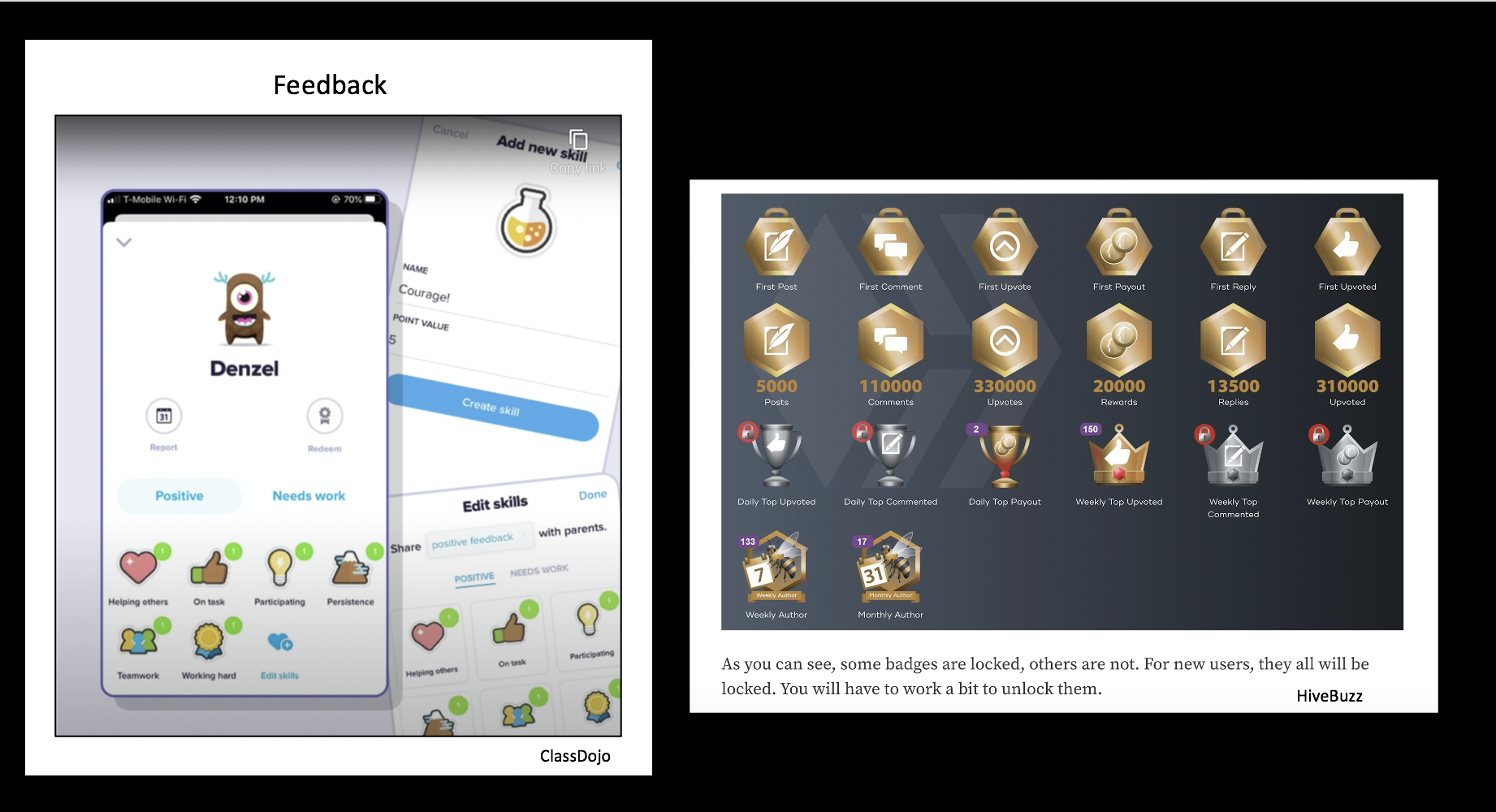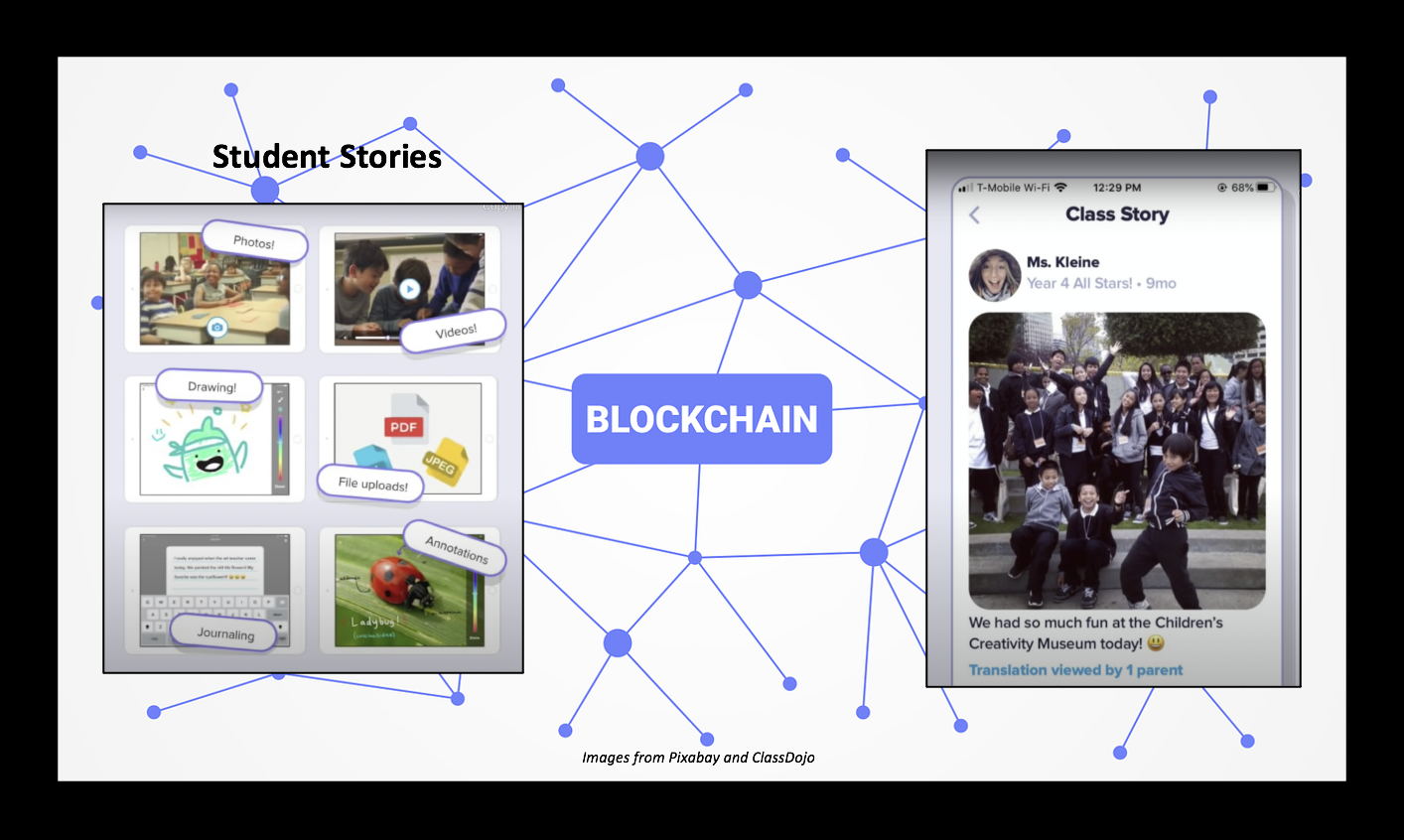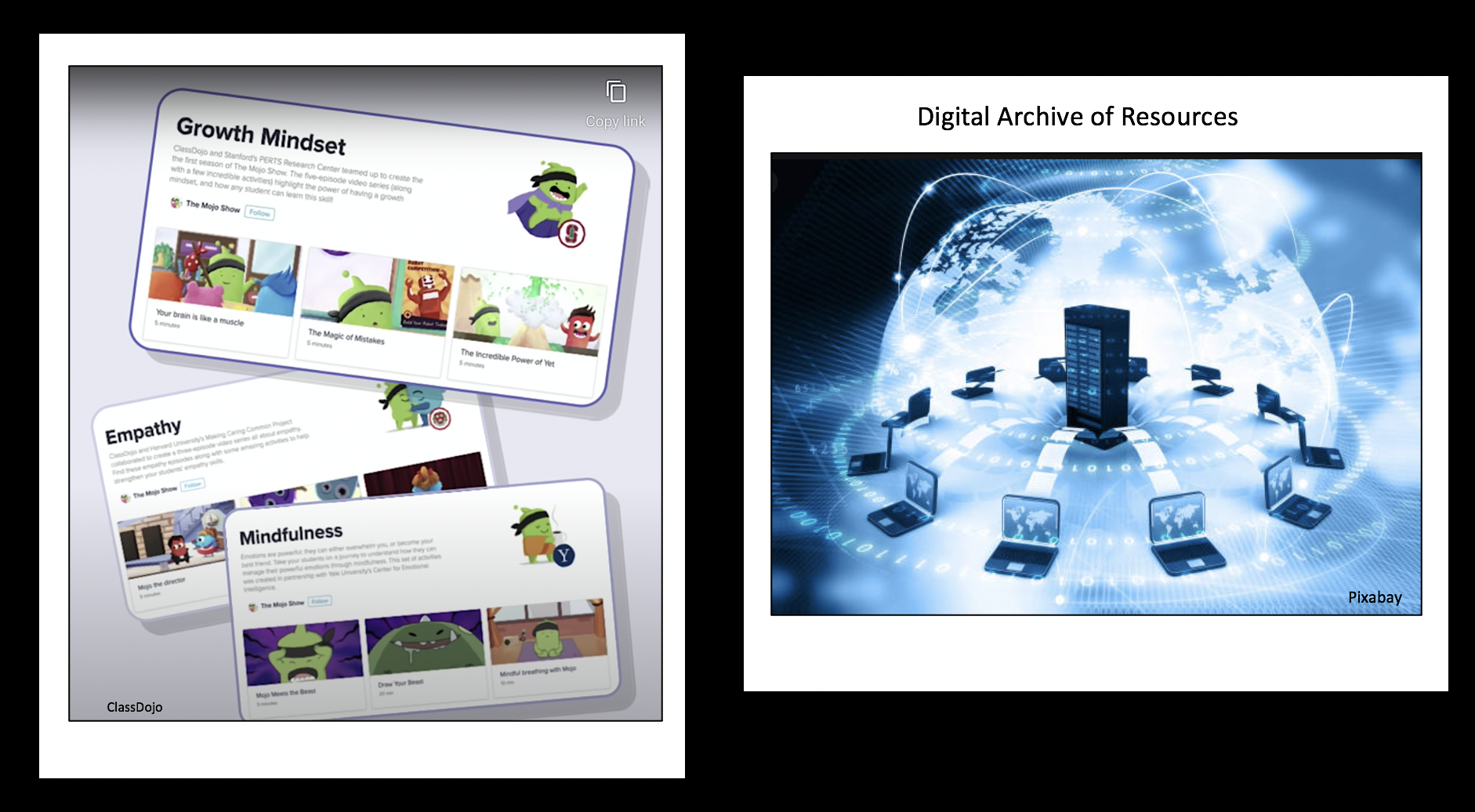In considering the ways in which Blockchain social media (as found in HiveBlog) can enrich classrooms, I chose to explore some possible future uses based on ClassDojo (https://www.classdojo.com). ClassDojo is a free communication platform (intended for children under 13) that teachers, students and parents can use to build a classroom community by sharing learning moments through photos, videos and messages. It offers customizable learning opportunities which work in the following ways:
ClassDojo’s “Classroom” is where teachers and students build their classroom culture by choosing skills and values to focus on – like creativity or teamwork – and sharing feedback with each other. Students choose their own avatar, which in this case is a fun and playful-looking monster that teachers can then use to track individual student work, participation and accomplishments. Any time students accomplish an important skill, like working hard, teachers reward them with points that can be redeemed. This way of goal setting or motivating positive behaviors can be customized to fit each community’s classroom needs.

The tokenization elements in ClassDojo that are being utilized to track and reward student learning could be expanded on using the kind of digital badging and reward system found in HiveBuzz. Accordingly, the student could be inspired to set increasingly difficult goals for themselves as they progress through rows of badges that correlate with different levels of task difficulty. And as Dr. Rodney suggested in an earlier post, perhaps students will even be able to exchange the digital currency they have earned for educational supports in the near future.
ClassDojo’s “Class Story” provides each family with their own private window into their child’s unique story via the photos and video teachers share with them throughout the school day. Parents can witness their child’s skill-building and actively share in and provide feedback on pivotal classroom learning moments. Additionally, “Student Stories” gives students ownership over their own learning, as they add photos or video, drawing, journaling, file uploads and annotations to produce a timeline or portfolio of all they have learned. In this way, students can determine the best ways to communicate their thinking and have flexibility in how they will share their work.

As concerns ClassDojo story cases, it is important for parents to know that their child’s information is being stored and shared in a secure manner. For this reason, users would benefit from knowing that information shared on a decentralized and encrypted blockchain would ensure their identities, rights and privacy is automatically being protected. Having these assurances might also embolden the quality and quantity of work that contributors feel safe to share on a broader social network.
ClassDojo’s “Messages” allow teachers, parents and school leaders to instantly message each other without contact details. Additionally, by joining the ClassDojo Facebook community, educators from around the world can share ideas, ask questions and get to know one another.
Whether messaging within a school community or opening the discussion up for a more global dialogue, community-building through dedicated discussion forums on Blockchain social media, like Hive, would enable participants to share information that could potentially benefit many communities of practice, while earning token for their active participation. Moreover, knowing that their privacy as well as the information that is being posted is secure might inspire those who would otherwise be reluctant to join the conversation; and raise the quality of socializing, relationship-building and community participation to a level only possible on a blockchain-protected globally distributed social network.
ClassDojo’s “Big ideas” provides educators and parents with access to original content (e.g. videos, discussion guides and follow-up activities) designed to help students develop important social-emotional learning skills like growth mindset, empathy and mindfulness. These resources were produced in partnership with educational innovators at Harvard, Stanford and Yale.

Blockchain’s ability to create “a true sharing community” that compensates “creators of value,” in a way that enables them to own, monetize and protect their data (Tapscott, 2016) would naturally support a global archive of resources that would be copyright protected, yet accessible to all educators on the network.
Tapscott, D. (2016, September 16). How the blockchain is changing money and business [Video]. TED.
ClassDojo (2020, July 16). Introduction to ClassDojo + Remote Readiness [Video]. YouTube.
HIVEBLOG (2020). HiveBuzz – Hive Gamification Experience. https://hive.blog/hivebuzz/@hivebuzz/hivebuzz-hive-gamification-experience
Kim - it is interesting to hear about the gamified aspects of ClassDojo. I have used ClassDojo's videos extensively with my classes to work on social emotional skills. I have also used it as a communication tool to share pictures with families in the past. However, I have not yet explored using the tokenization elements with my students. In part, it is hard when students are so young and dependent on families or school resources to access digital communications or platforms. For me personally, ClassDojo began to feel like one more thing I had to remember to update as a teacher. As a parent whose child's teachers used Dojo, it was one more platform I had to remember to check for updates and information. I ended up reverting to using email to share photos to keep things simpler for myself and the families of my students. This is one thing I wonder/worry about as we explore all of this educational technology use with students - how much is too much and do the benefits outweigh the hassles?
Annie & Kimberly ,
I too have heard of ClassDojo, but have never used it in my mathematics classroom. However, it may be useful as we delve into creativity activities next year. I like the idea of the SEL aspect for our Advisory students. However, as Annie points out, we have to find a balance for ourselves and our students as to not be overwhelmed with too many platforms.
Denise & Annie,
I agree that having all tools on one platform is preferable. However, using ClassDojo as an example (not a platform I have personally used, by the way), I can see where leveraging this platform via the Blockchain could help to connect different functions in a more unified way.